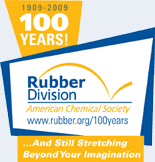![[ Visit ACS Rubber Website ]](images/logo.jpg) |
|
Centennial Elite SponsorsBecome a Centennial Elite Sponsor |
152 Iterative Solid-Fluid Coupled Approach to Illustrate Vehicle Hydroplaning ProblemThursday, October 15, 2009: 10:30 AM
326 (David L. Lawrence Convention Center )
Prediction of tire wet traction performance is challenging due to its complex multi-physics. Tread sculpture optimization for water expulsion, tire architect rendering higher contact pressure, and narrower rolling tread width, as well as their stiffer rubber structure material are used as tuning parameters to mitigate against hydroplaning. In this study the effect of tire contact patch deformability during the onset of hydroplaning is initially investigated. A coupled Computational Fluid Dynamics (CFD) and Finite Element Method (FEM) simulation procedures were developed to study the interaction mechanisms between fluid forces and tire deformations. The tire model is based on a Non-linear explicit FEM that simulates the mounting, inflation, the loading and the outcome deformation. The model accounts for thirteen nonlinear rubber and one linear elastic material with their data fitted via Mooney Rivilin model. The fluid model is based on multi-phase, incompressible and turbulent Navier-Stokes equations that compute the flow field and its surface pressure in the vicinity of the tire contact patch area. The simulation was performed on 195/65/R15 as baseline tire. The results obtained in this study reveal the significant effect of contact patch deformation on the hydroplaning mechanism. A comparison between the numerical results and the glass pit loss of contact patch experimental results are also presented. The simulation results are extremely useful to be integrated to vehicle dynamic model and allow the prediction of vehicle handling performance.
|









